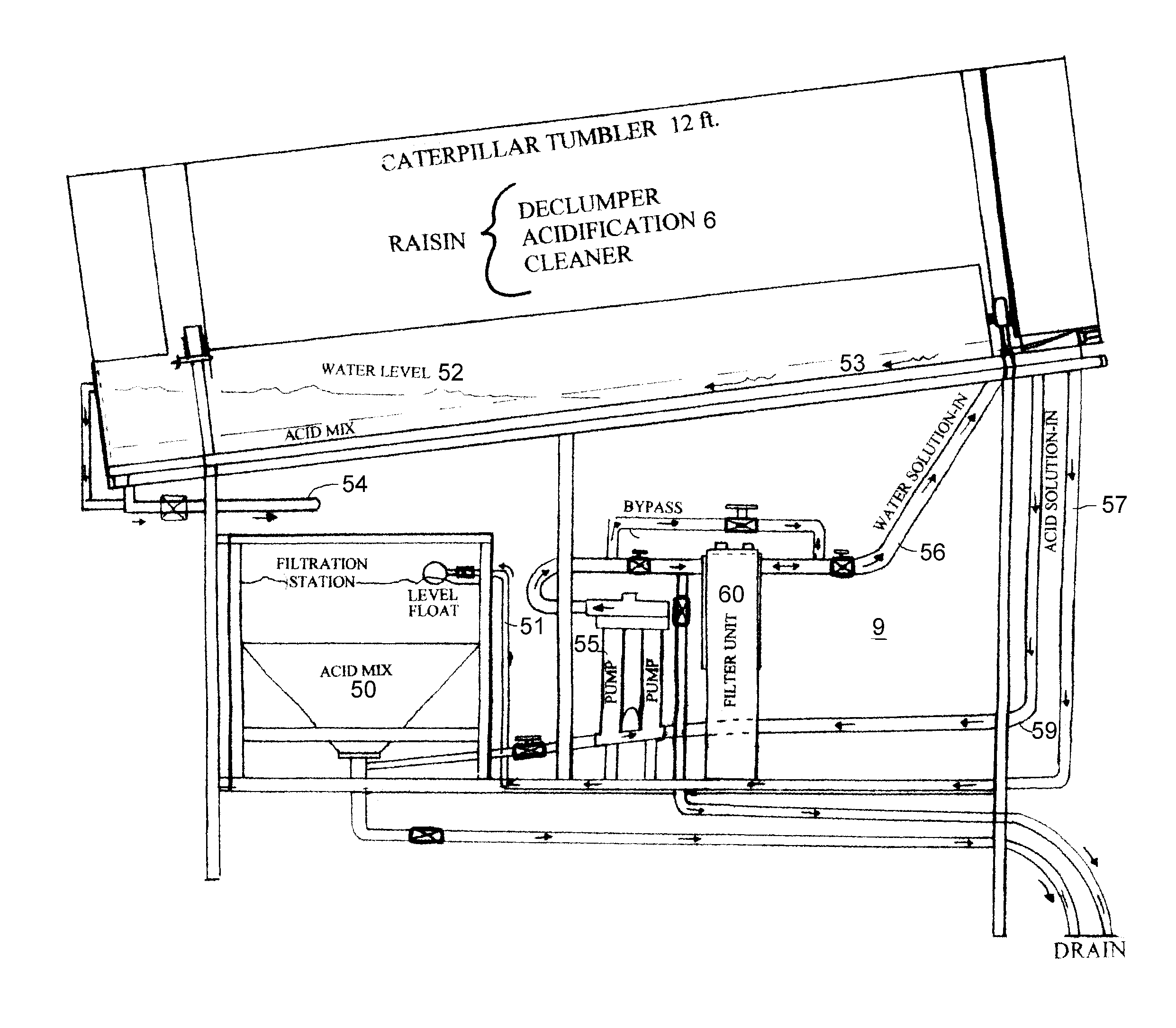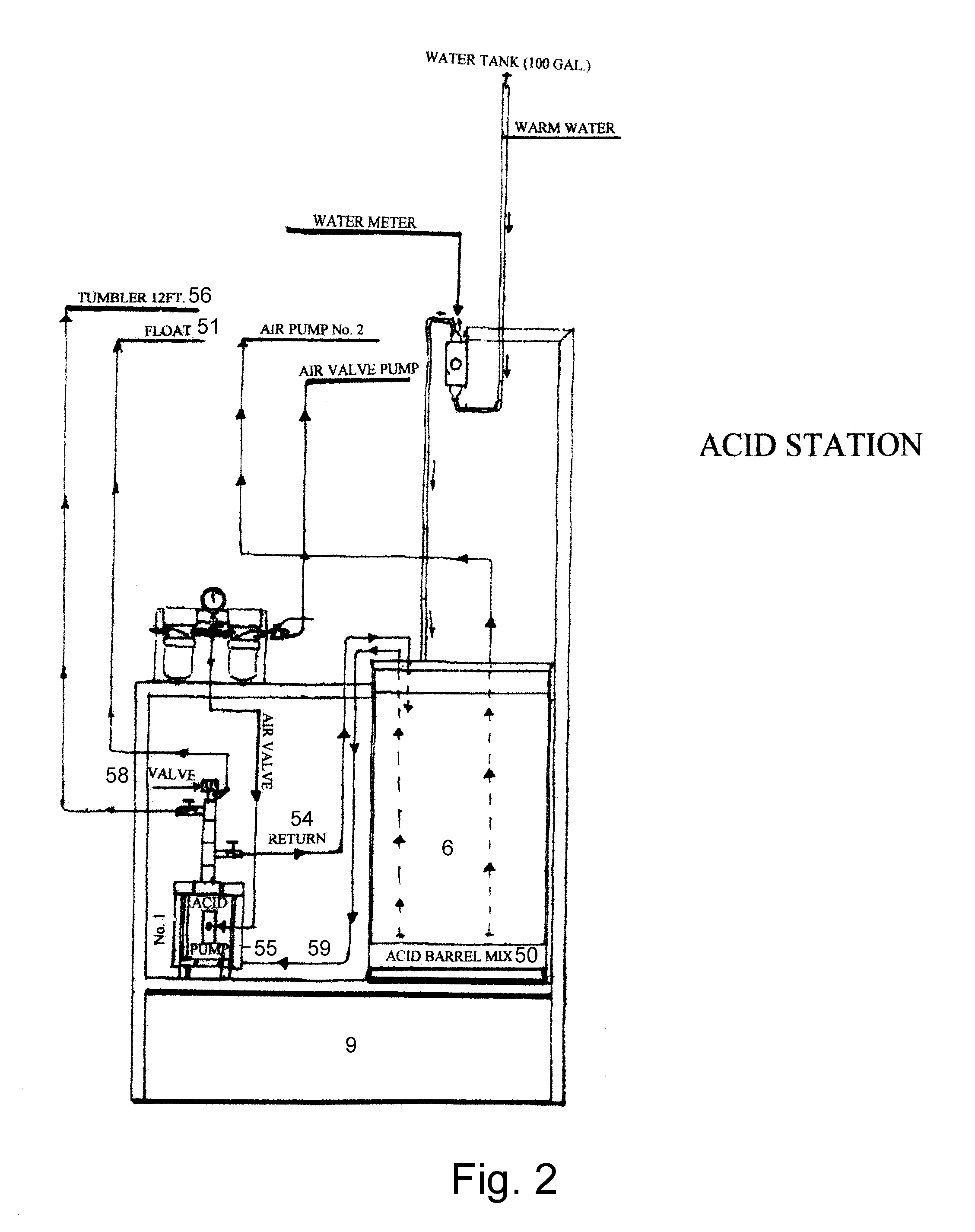System and method for producing a dehydrated food product
- Summary
- Abstract
- Description
- Claims
- Application Information
AI Technical Summary
Benefits of technology
Problems solved by technology
Method used
Image
Examples
example 1
[0044]112 kg of Australia sultana raisins were fed through the declumping rotating drum. The raisins were then treated with warm (110 F) 1.25% citric acid solution. The speed of the drum was adjusted so that the raisins did not get substantially damaged. The acidic spray was continued for 30 minutes before conveying the acidified raisins to a staging area, where they were held for 20 minutes to stabilize. The raisins were then transferred to an Epson Eclipse dryer where they were dried for about 5 minutes at 180 F, adjusted according to the amount of acid solution absorbed. The redried raisins were then cooled down to about 70 F and jet sprayed with natural orange flavor (AFI #10589-12795) at 1.5% by weight. The raisins were allowed to soak for 15 minutes before transferring into a chilling tunnel where they were cooled to about 50 F before packaging.
example 2
[0045]112 kg of Australia sultana raisins were fed through the declumping rotating drum. The raisins were then treated with warm (110 F) 1.25% citric acid solution. The speed of the drum was adjusted so that the raisins did not get substantially damaged. The acidic spray was continued for 45 minutes before conveying the acidified raisins to a staging area, where they were held for 20 minutes to stabilize. The raisins were then transferred to an Epson Eclipse dryer where they were dried for about 7 minutes at 180 F, adjusted according to the amount of acid solution absorbed. The redried raisins were then cooled down to about 70 F and jet sprayed with natural lemon flavor (AFI #10589-12887) at 1.5% by weight. The raisins were allowed to soak for 15 minutes before transferring into a chilling tunnel where they were cooled to about 50 F before packaging.
example 3
[0046]112 kg of Australia sultana raisins were fed through the declumping rotating drum. The raisins were then treated with warm (110 F) 1.25% citric acid solution. The speed of the drum was adjusted so that the raisins did not get substantially damaged. The acidic spray was continued for 20 minutes before conveying the acidified raisins to a staging area, where they were held for 20 minutes to stabilize. The raisins were then transferred to an Epson Eclipse dryer where they were dried for about 7 minutes at 180 F, adjusted according to the amount of acid solution absorbed. The redried raisins were then cooled down to about 70 F and jet sprayed with natural cherry lemon flavor (AFI #81213-3243) at 1.5% by weight. The raisins were allowed to soak for 15 minutes before transferring into a chilling tunnel where they were cooled to about 50 F before packaging.
PUM
 Login to View More
Login to View More Abstract
Description
Claims
Application Information
 Login to View More
Login to View More - R&D
- Intellectual Property
- Life Sciences
- Materials
- Tech Scout
- Unparalleled Data Quality
- Higher Quality Content
- 60% Fewer Hallucinations
Browse by: Latest US Patents, China's latest patents, Technical Efficacy Thesaurus, Application Domain, Technology Topic, Popular Technical Reports.
© 2025 PatSnap. All rights reserved.Legal|Privacy policy|Modern Slavery Act Transparency Statement|Sitemap|About US| Contact US: help@patsnap.com



